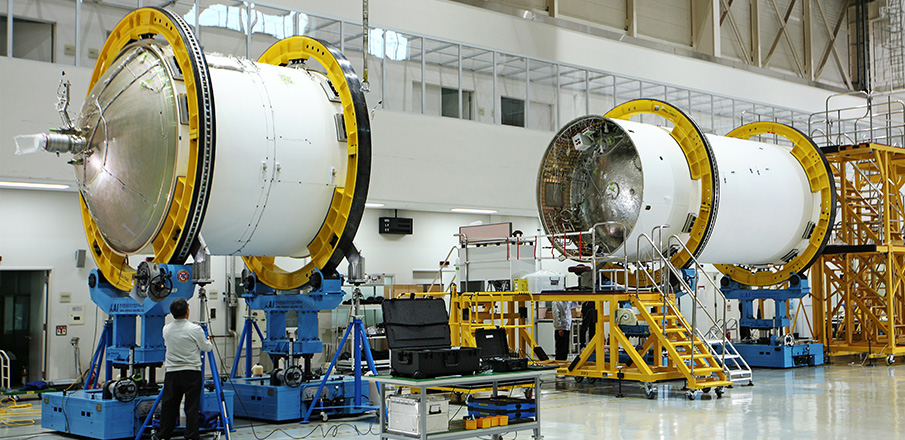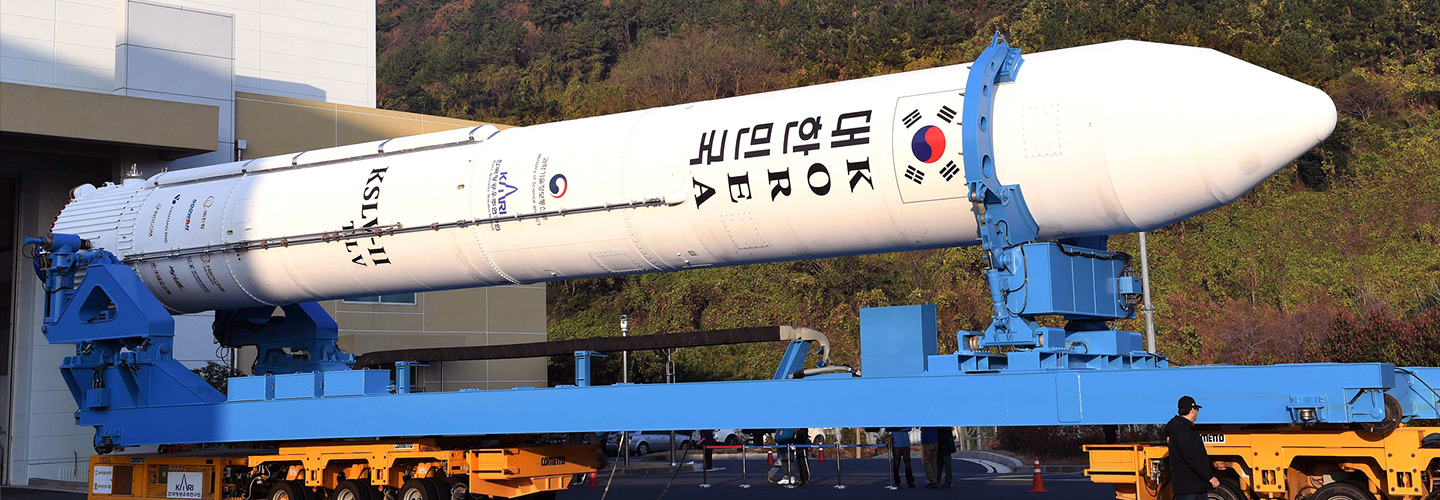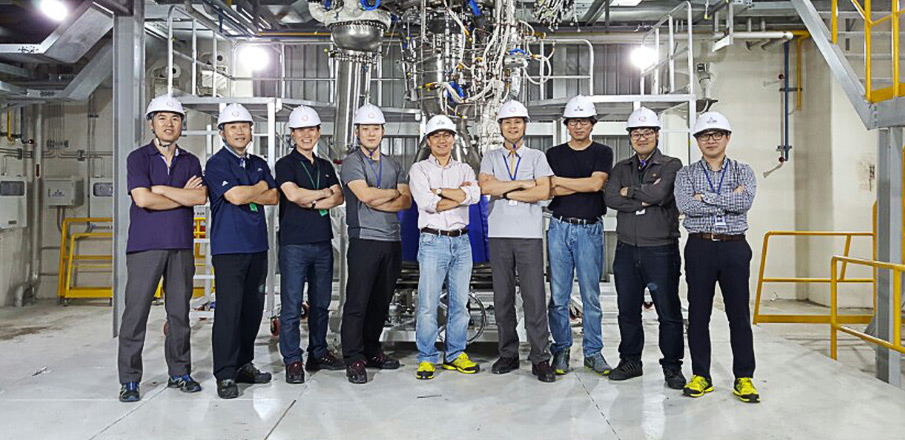Meet the Team: Hanwha Aerospace Kslv-2 Engineers

Wednesday, November 28th, 2018, was a historic day. On this day, the KSLV-II space rocket – a test launch vehicle built with Hanwha’s cutting-edge technology and materials – took its first flight into space. And now, South Korea is tantalizingly close to achieving its goal to send a fully indigenous rocket into orbit by 2021.
At Hanwha Aerospace’s flagship plant in Changwon, Korea, 11 engineers and 11 manufacturing specialists are going all out to boost Korea’s space program.
Just as the human heart is the driving force behind the blood that courses through our body, the engine is the power behind the rocket that is launched into space. In essence, the engine is the heart of a rocket.
- Jonghan Kim / Senior Manager : Manufacturing Engineering Team/Propulsion Unit Manufacturing Department
- Sungmoon Lim / Supervisor : Propulsion Unit Manufacturing Team/Propulsion Unit Manufacturing Department
- Younghun Lim / Manager : Manufacturing Engineering Team/Propulsion Unit Manufacturing Department
Sungmoon Lim said, Hello! I’m Sungmoon Lim and I lead the KSLV-II team here at Hanwha Aerospace. (*KSLV: Korea Space Launch Vehicle)
Jonghan Kim said, I’m Jonghan Kim and I lead the Propulsion Unit Manufacturing Department at Hanwha Aerospace.
Younghun Lim said, I’m Younghun Lim and I’m a member of the Propulsion Unit Manufacturing Department.
KSLV-II (a.k.a. Nuri), South Korea’s first fully indigenous carrier rocket, successfully completed its historic test flight on November 28, 2018.
A maiden flight 15 years in the making. Meet the team working on the heart of the KSLV-II rocket.

The Test Launch Vehicle assembly for quality certification
- Q. How did you become a part of the KSLV project?
-
Jonghan Kim said, Back in 2011, while I was working on the KSR-series science rocket program, I was recruited by the department head to join the KSLV project. I joined the program because I was attracted to the very different development requirements with rockets and their ability to take a satellite payload into orbit.
Sungmoon Lim said, Back then, no one in Korea dared to even think of building a space launch vehicle but the moment I first joined the project, my job was to develop the turbo pumps for the rocket. Many people would doubtfully ask me questions like “Are you sure you can build this?” or “Can we really pull this off?” I believed it was possible and that it was a project worth completing. My belief has helped me to keep going and come as far as I have.
- Q. What were the challenges encountered during the development of the KSLV-II space launch vehicle?
-
Younghun Lim said, I remember it being difficult because there were a lot of design changes in the beginning of the development process. If the engines didn’t perform as intended during the combustion tests, there would be many redesigns. We’d also have to make repairs or even disassemble the engines and fabricate new parts all the time.

The Test Launch Vehicle being transported for launch
- Q. What does it mean for the launch to have been done with “fully indigenous technology”?
-
Jonghan Kim said, Being able to locally develop satellites, rockets, and launch facilities means that our nation can be part of the “space club” – an unofficial club consisting of a select group of nations with advanced space programs. And being part of this this elite club can lead to more opportunities to systematically develop the skills, technology and the environment that will allow younger generations of Korea to be inspired and not only be able to admire the space programs of other nations but also be proud of their own.
Younghun Lim said, In the past, I’ve often felt blocked and unable to continue because there was no roadmap to follow. Now I feel our work is meaningful and my direction clear because the work we do now will serve as the benchmark for the Korean space launch industry. And knowing that we are paving the way for younger generations to follow, is driving us to focus and create more detailed and practical documentation for them.
- Q. What does “precision technology” mean with regard to engine production?
-
Jonghan Kim said, Quite literally, precision technology is complex technology that requires an extremely high level of skill and knowledge. Liquid-propellant rockets and space launch vehicles require an even higher level of precision technology. This means that you need layers of inspection and verification processes to make absolutely sure that everything is precisely manufactured and assembled.

The Propulsion Unit Manufacturing Department team at Korea Aerospace Research Institute (KARI) after successfully installing the 75-ton class first-stage engine
- Q. How are you currently preparing for the orbital launch of KSLV-II in 2021?
-
Jonghan Kim said, We are currently assembling the prototype (qualification model) of the 75 ton-class engine that will be used in a three-stage launch vehicle test flight. Once that testing is complete and approved, we will begin building the prototype, the flight engine that will be used in the actual orbital flight scheduled for 2021.
Everyone on the team is keeping a cautious eye on each step to make sure that the assembly process we’ve built is applied more systematically in the actual build of the flight model.
- Q. What is the driving force behind your work?
-
Sungmoon Lim said, The confidence in knowing that I’m doing something that very few people can do.
Jonghan Kim said, For me, it’s all the experience I’ve gained while working on many different projects over the years since joining Hanwha.
Younghun Lim said, I think it’s the professional responsibility. I feel that I am passionate about what I do because I feel responsible for delivering the best work that I’ve been entrusted to do.
Way to go, Hanwha Aerospace!


